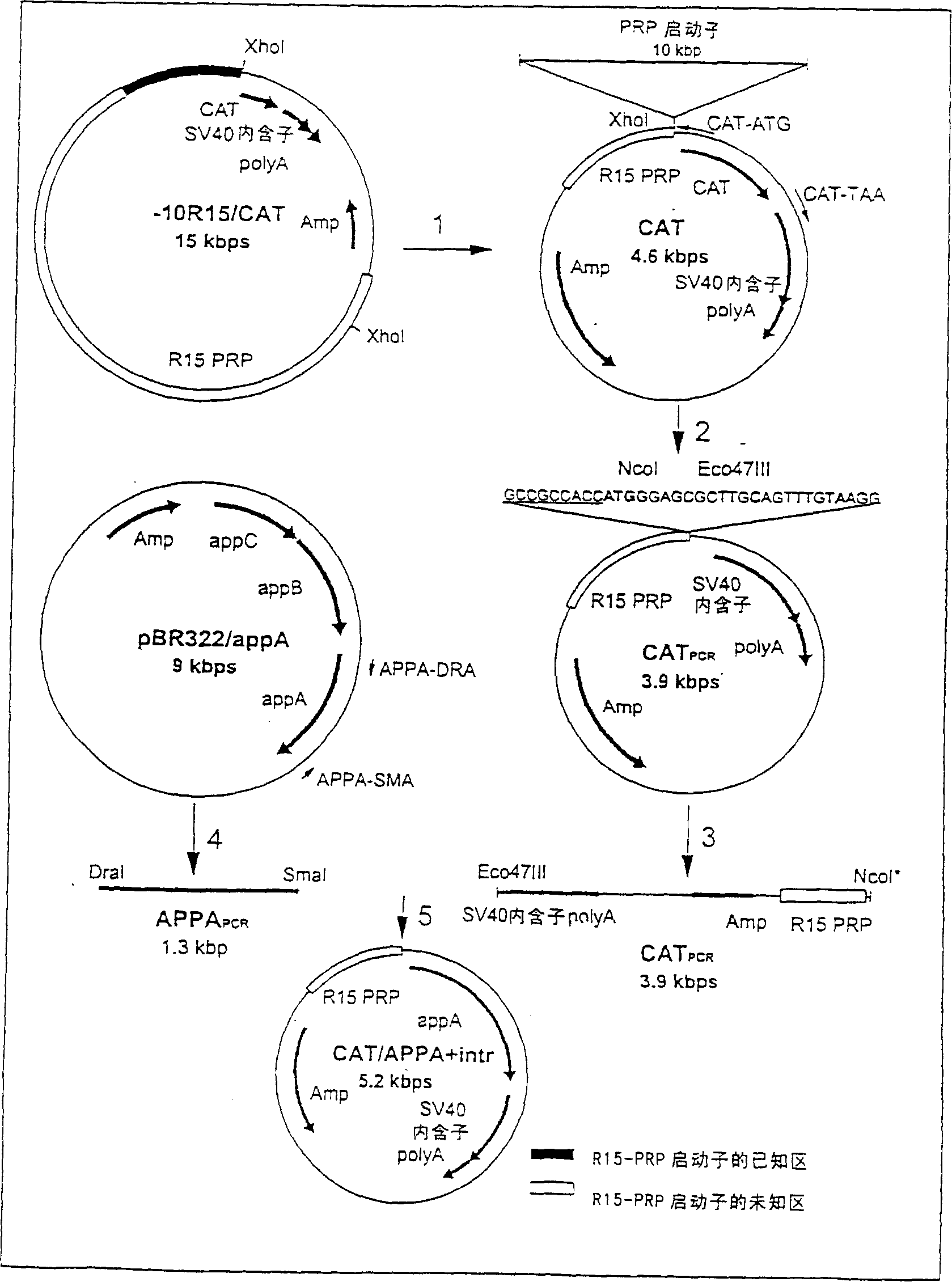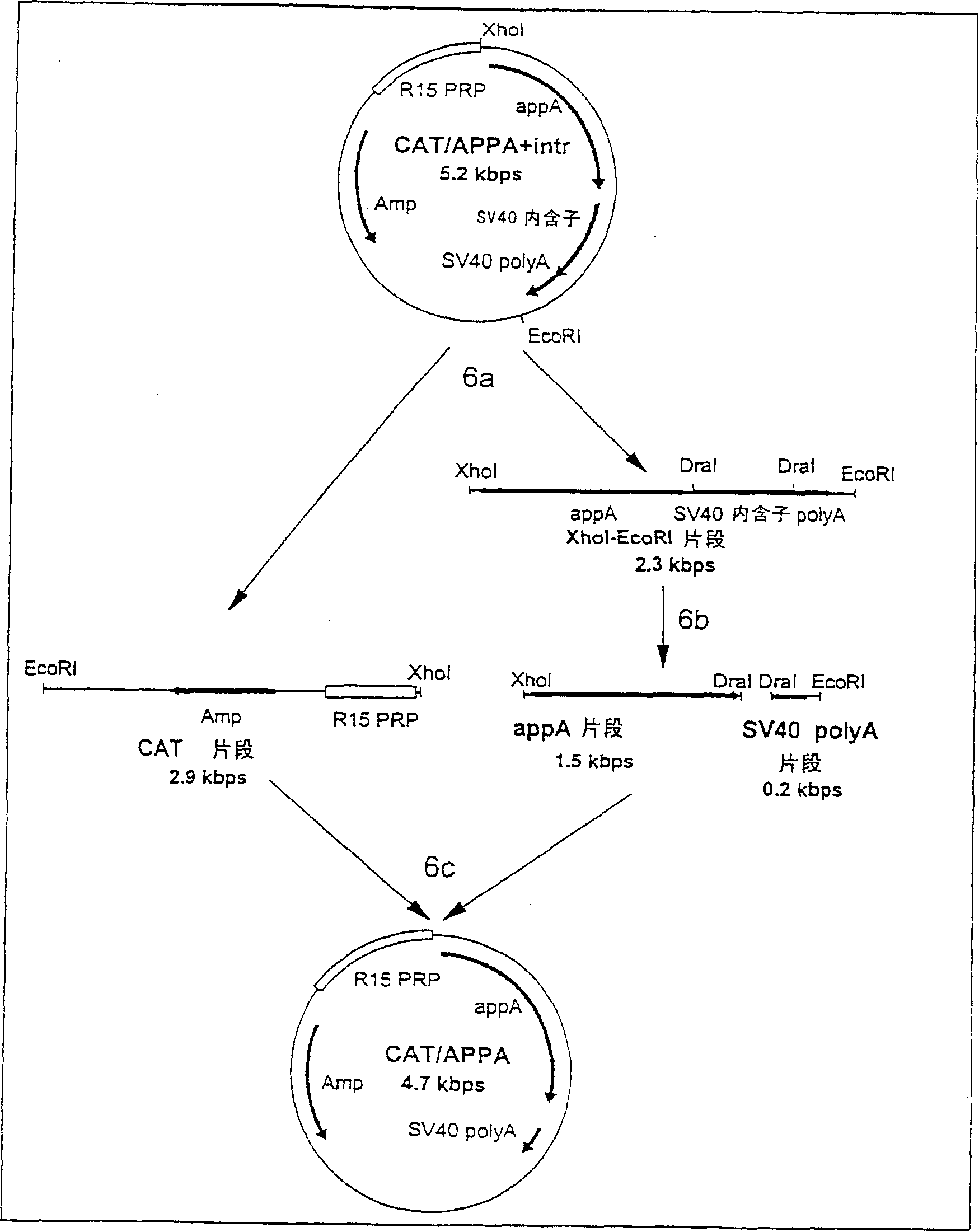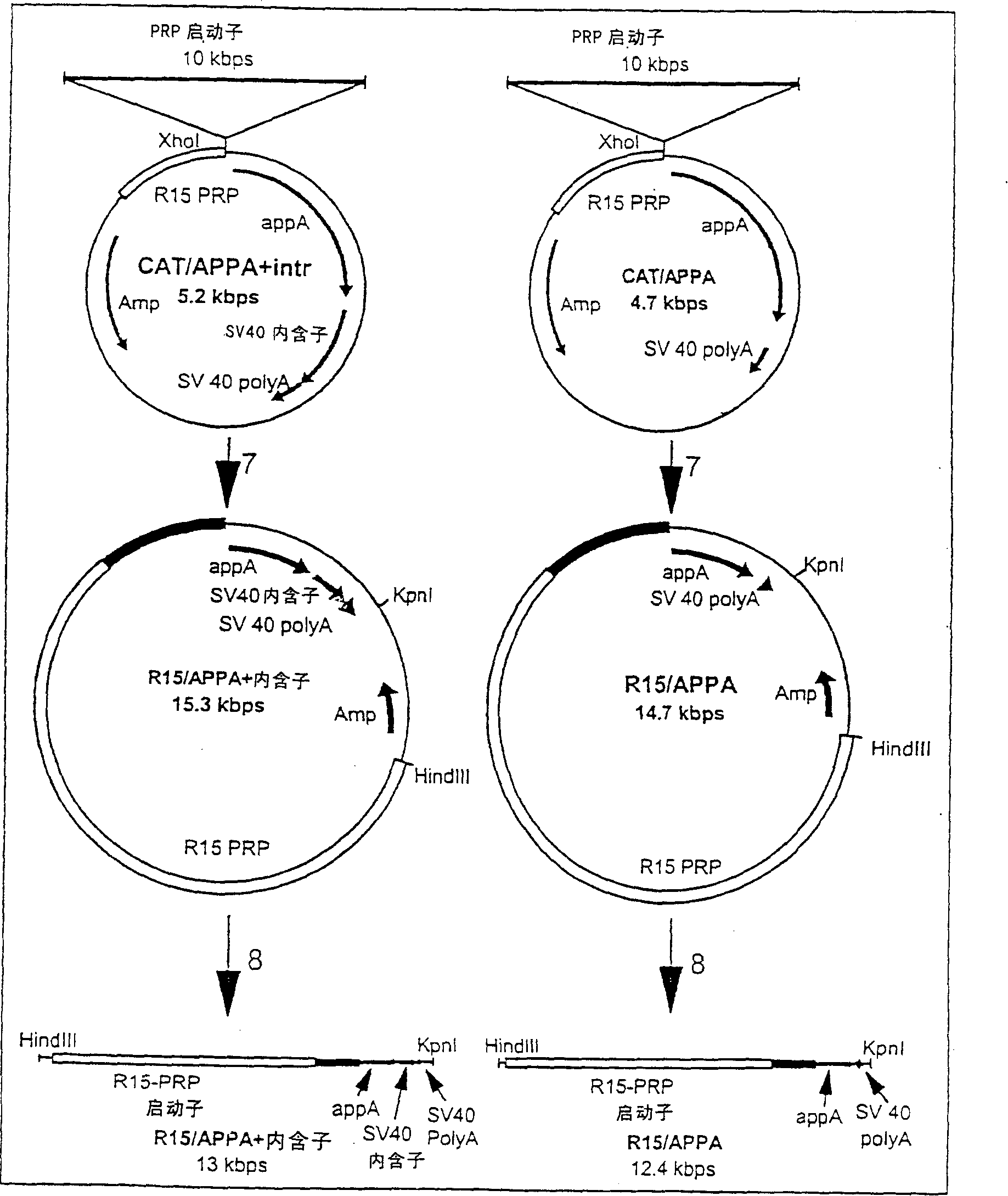Transgenic animals expressing salivary proteins
A technology of transgenic and transgenic pigs, which is applied in the field of animals that have been genetically modified to express the desired protein, and can solve the problem of not cloning the phytase gene
- Summary
- Abstract
- Description
- Claims
- Application Information
AI Technical Summary
Problems solved by technology
Method used
Image
Examples
Embodiment Construction
[0060] Description of the preferred embodiment
[0061] In the following description, a number of recombinant DNA technical terms are used. The following definitions are provided to enable a clearer understanding of this specification and the appended claims:
[0062] "Promoter" - a DNA sequence usually described as the 5' region of a gene and close to the start codon. Transcription of adjacent genes is initiated from the promoter region. If the promoter is an inducible promoter, the rate of transcription increases in response to the inducing agent. A constitutive promoter, on the other hand, initiates transcription of adjacent genes without additional regulation.
[0063] "Operably linked" - Nucleic acid sequences are "operably linked" when placed into a functional relationship with another nucleic acid sequence. For example, a promoter or enhancer is "operably linked" to a coding sequence if the promoter causes transcription of the sequence. Generally, "operably linked"...
PUM
 Login to View More
Login to View More Abstract
Description
Claims
Application Information
 Login to View More
Login to View More - R&D
- Intellectual Property
- Life Sciences
- Materials
- Tech Scout
- Unparalleled Data Quality
- Higher Quality Content
- 60% Fewer Hallucinations
Browse by: Latest US Patents, China's latest patents, Technical Efficacy Thesaurus, Application Domain, Technology Topic, Popular Technical Reports.
© 2025 PatSnap. All rights reserved.Legal|Privacy policy|Modern Slavery Act Transparency Statement|Sitemap|About US| Contact US: help@patsnap.com



